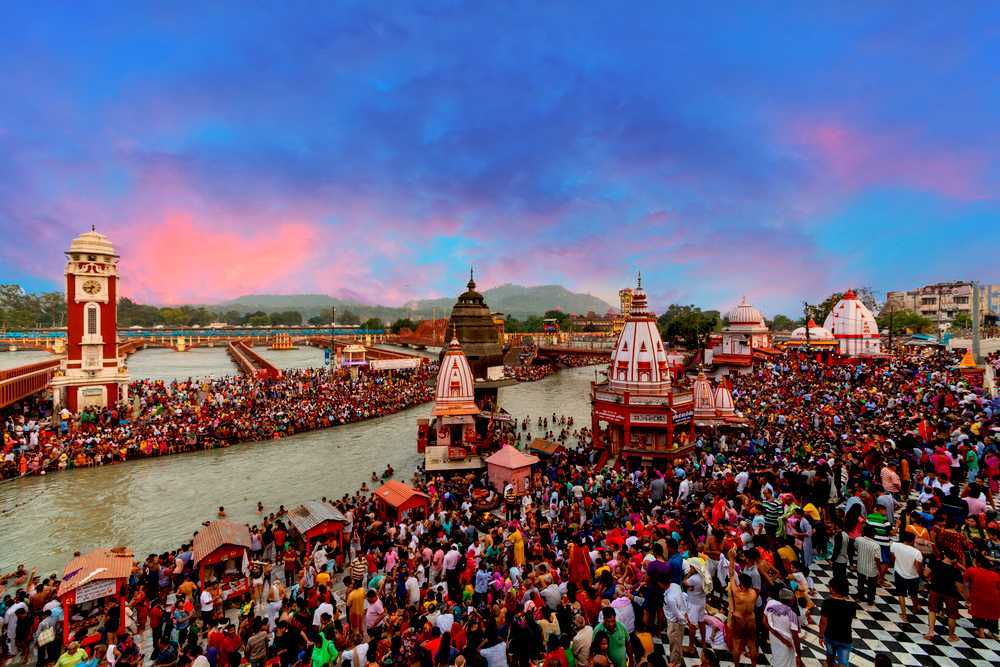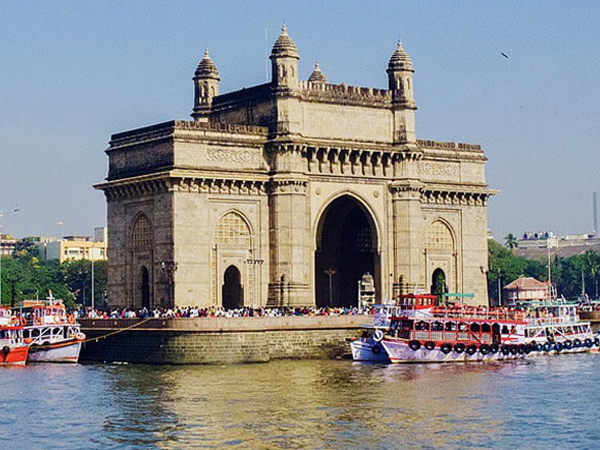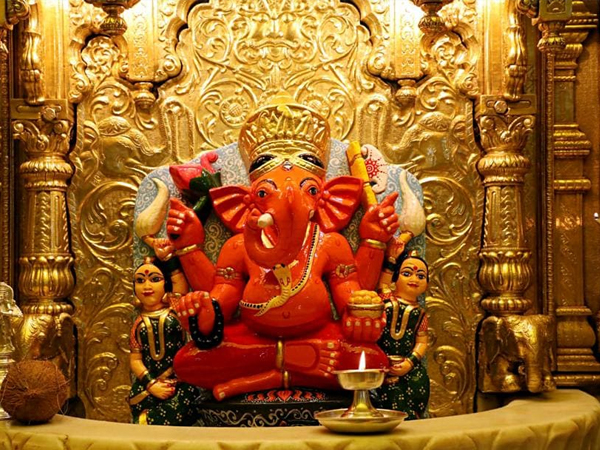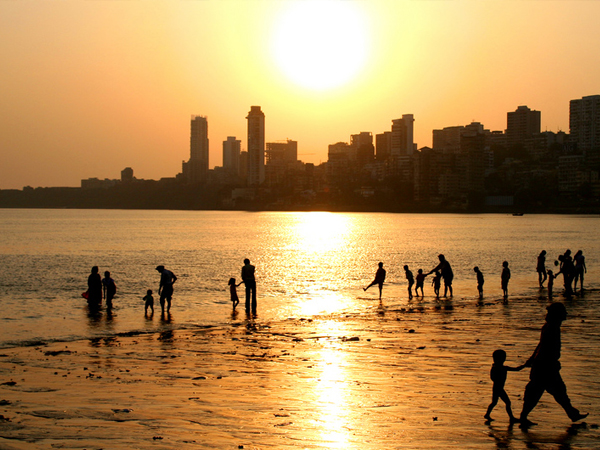
The tales from the bygone time greatly influence the contemporary era, and thus, Haridwar is often seen imbibing the spiritual feel. Believed to be amongst the four places where drops of Amrit (Elixir) fell, Haridwar is relied upon for cleansing of sins and attainment of salvation, and thus, is an important Hindu pilgrimage destination in Uttarakhand. It is also due to this fact that Haridwar hosts the biggest human gathering in the world in the form of Kumbh Mela. Since time immemorial, Haridwar is considered one of the important religious tourism destinations in India; it has also been the Yoga and Ayurveda center for a decent period. Surviving several tests of time, the city has been able to earn itself a sensible market for business and some eminent institutes of learning like Gurukul. However, it is not all about concrete in Haridwar, the city is visually beautiful and is near the famous Rajaji National Park and Neel Dhara Pakshi Vihar making it a perfect place for wildlife tours as well.
The city formulates the base for the state’s prominent Chhota Char Dham Yatra, which is held between late April and October and covers places like Badrinath, Kedarnath, Gangotri, and Yamunotri. True to its name, it indeed forms the Gateway to God as the ashes of the deceased are brought to the city for emersion in the holy river Ganga. In other words, Haridwar can be called the place where faith defies the existence of everything else and the life of the people only revolves around the sacred Ghats crammed with devotees; the holy water of Ganges that is believed to cleanse the sin; the sanctified temples; and the famed Ganga Aarti that sanctifies the ambiance as soon as the sun disappears below the horizon each evening.
Tour My India presents a Haridwar travel guide that can assist in planning an organized tour in the city. Complete information on places to visit, things to do and shop, places to eat, and how to reach are articulately provided. Information on varied holiday packages in Haridwar is also dissimilated so that one can pick out the best for himself.
Top Tourist Attractions in Haridwar:
Haridwar is dotted with temples and several travel destinations. The sacred city of Haridwar is also the perfect place to recognize one’s inner self. There are several yoga and Ayurveda ashrams that allow unwinding and finding a whole new meaning in life. On the other hand, one can make a sightseeing tour to religious destinations.
Har Ki Pauri Haridwar
Har Ki Pauri is one of the most sacred Ghats in Haridwar and the only place where all the spiritual activities take place. The ghat is reckoned to have been built by King Vikramaditya in memory of his brother Brithari in the 1st century BC. The literal meaning of the term ‘Har Ki Pauri’- “Har” means “Lord Shiva”, Ki” means “of” and “Pauri” means “steps”. Priest of the nearby temples says that during the Vedic times, Lord Shiva and Lord Vishnu are believed to have visited Brahmakund in Har Ki Pauri. The Ghat got its name from the foot imprint of the Lord Vishnu, the imprints of the same are present on one of the stones of the Ghat. In geographical terms, Haridwar is the place where the river Ganges descends from the Gangotri glacier to the Indo-Gangetic plains of North India. Har Ki Pauri remains busy during the Ardh Kumbh Mela, Vaisakhi festival, Kanwar Yatra, and Magh Mela. Also, it is one of the four incredible sites in India that hosts the Kumbh Mela, during which millions bathe in the Ganga River.
Mansa Devi Temple Haridwar
Custodians of beliefs of many devotees, Mansa Devi temple blesses the lives of those who visit there. Located atop the Bilwa Parvat, Mansa Devi Temple is known for being home to Manasa, a form of Shakti believed to emerge from the mind of Lord Shiva. The temple is also one of the three Siddh Peetha, the other two being Chandi Devi Temple and Maya Devi Temple. The literal meaning of the terms ‘Mansa’ is ‘wish’ and it is one of the places of worship where desires get fulfilled. Devotees can make a wish by tying a thread to branches nearby the temple and once their wishes get fulfilled, they visit the temple again to untie the thread from the tree. The temple features two main idols of Goddess Mansa, one with three mouths and five arms, while the other one has eight arms.
To reach the main temple, one can either walk uphill or can hop in a cable car called “Mansa Devi Udankhatola” or bus. A spectacular view of the river Ganga from the cable car is the main attraction of the Mansa Devi Temple.
Chandi Devi Temple Haridwar
Perched on the top of the Neel Parvat, Chandi Devi Temple is an important pilgrimage center of Haridwar. It is believed that the principal deity of the temple was established by Saint Adi Shankaracharya in the 8th century. Chandi Devi Temple is four km away from Haridwar and can be reached by trekking uphill or through a cable car. The current structure of the temple was constructed in 1929 by Suchan Singh, who was then the reigning King of Kashmir. Chandi Devi Temple is one of the Siddhpeeth, along with Maya Devi and Mansa Devi. Commonly known as Neel Parvat Teerth, the temple is also one of the Panch Tirth, five pilgrimage sites located in Haridwar. According to legends, the temple is situated at the same place where Chandi, the goddess born from the energies of the male divinities, killed Chand- Mund, and then Shumbha and Nishumbha.
After the divine darshan of the deity, tourists can further visit the dense forest on the other side of the Neel Parvat. Close to the main temple is another shrine sacred to Anjana, mother of Lord Hanuman. If tourists are planning to trek on Neel Parvat, can visit the Neeleshwar Temple, which is located in the foothills of the Neel Parvat. Chandi Devi Temple bustles with devotees during the festival of Chandi Chaudas, Navratri, and the Kumbha Mela in Haridwar to seek the blessings of divinity. Leather accessories, alcohol, and non-vegetarian food are strictly prohibited in the temple.
Bharat Mata Mandir Haridwar
Founded by the Swami Satyamitranand Giri, Bharat Mata Temple is a unique temple sacred to Mother India and her spiritual and cultural glory. Smt. Indira Gandhi, a politician who served as prime minister of India, formally inaugurated the temple on 15 May 1983. Located on the bank of Ganga, the temple welcomes people of every religion and community. The emblem of the temple, a woman dressed in a saffron-colored sari and holding the flag in one of her hands, is readily noticeable. Key features of the temple are homeopathic and allopathic dispensaries, diagnostic camps, physiotherapy centers, gaushala ( a cow shed with ultra-modern facilities), Ved Vidyalaya (school for learning Vedas), and Old age home (Bharat Sadie). Also, there is an Atithi Sewa (Samanvaya Kutir), a delightful complex consisting of Satsang Bhavan, a well-stocked library, and residential accommodation. At a height of 180 feet, Bharat Mata Temple is spread over seven floors, each level dedicated to different Gods and mythological heroes.
Daksheswara Mahadev Temple Haridwar
Daksheswara Mahadev or Daksha Mahadev Temple, sacred to Lord Shiva, holds a prominent position in the Haridwar pilgrimage tour circuit. The temple is named after the father of Goddess Sati, King Daksha Prajapati. The point where the temple stands today was once the place where King Daksha Prajapati performed the Yajna and Sati self-immolated herself in the yagna kund.
The origin of the Daksha Mahadev temple lies in one of the stories of Shiva Purana. According to one such tale, King Daksha once performed a grand Yajna and invited every deity to the event, even his daughter, Sati, but ignored her husband, God Shiva. In this first incident, Sati felt so enraged that she set herself on fire in the flames of Yajna. When Lord Shiva got to know about this mishappening, he immediately sent one of his bravest warriors who were born out of his anger, Veerbhadra, to the earth to chop off the head of King Daksh and obliterate it in the fire of Yajna. Everybody was frightened by the act of Lord Shiva and all the deities, including Lord Vishnu, asked Lord Shiva to appear on the site, where the incident took place, as the self-created linga. To complete the procedure of Yajna, Lord Shiva later restored the Daksha head by putting the head of a goat on the shoulder of the corpse. After this, grief-stricken Shiva announced that every year during the Sawan month, Kankhal would be his abode. Currently, the temple stands at the same place where this epochal event unfolded itself.
Split into two parts, one part of the temple comprises a Yajna Kund; another part consists of a Shiv Linga. The entire history of the temple, step by step episodes, is well portrayed through the temple interiors. Inside the temple, there is also a sacred banyan tree, which is believed to be hundred years old. Later in 1810, the king of Landhora state constructed an enormous temple in this place. Then in 1936, the temple was renovated by 1963 by Mahanirvan Akharas Kankhal. In the Daksheswara Mahadev Temple complex, one can find many other temples as well.
Doodhadhari Barfani Temple Haridwar
The spiritual town of Haridwar is famous for the impressive Doodhadhari Barfani Temple in Doodhadhari Barfani Baba Ashram. With temples sacred to Ram-Sita and Hanuman, the Doodhadhari Barfani Temple is known for its architectural finesse. The relief work in marble and inlay with beautiful carvings makes its architecture looks apart from other shrines of Haridwar. Doodhadhari Barfani Temple is reckoned as the temple of tremendous faith and miracles, and that is the reason it attracts an enormous crowd from different parts of the country.
Amidst the lush green gardens, the temple sits on a platform with intricately carved exteriors offering a real visual ecstasy. Elegant architectural designs and immense religious significance make Doodhadhari Barfani Temple a sheer delight for travelers and dwellers. To reach Doodhadhari Barfani Temple, one has to travel by bus or private taxi from Haridwar. Doodhadhari Barfani Temple is not only an important pillar of the Haridwar spiritual tour but also a retreat to the eyes of the believers. Sacred entities and influential architecture have made Doodhadhari Barfani Temple earn unparallel fame.
Maya Devi Temple Haridwar
Maya Devi Temple, one of the three Siddh Peetha and often referred to as Shakti Peetha, is a famous tourist attraction of Haridwar. Formerly Haridwar was also known as the Mayapuri in veneration of this deity. Built-in the 11th century, Maya Devi Temple is also one of the three ancient temples of Haridwar, which is still intact, the other two being Narayana-Shila and Bhairava Temple. Major attractions of the temple are idols of Goddess Maya, Goddess Kali, Goddess Kamakhya, and two other goddesses, who are also forms of Shakti. Goddess Maya, the main deity of the temple, is a three-headed and four-armed deity and is believed to be the incarnation of Goddess Shakti. According to the tales and history associated with the Temple, Daksha, the father of Goddess Sati insulted her husband, God Shiva, and to avenge the insulting demeanor of her father, she set herself on fire. Lord Shiva was burning with rage when he got to know about his wife’s death, and then he undertook a tour of the universe carrying the corpse of Goddess Sati. When Shiva, was carrying the corpse of his wife Sati, the navel and heart of Goddess Sati fell at the site of the existing temple. The best time to visit Maya Devi temple is during Navratri and Kumbh Fair.
Patanjali Yogpeeth Haridwar
Haridwar, the spiritual center of India, the holiest city for Hindus, and also an emerging new yoga hub, is home to India’s largest yoga institute- Patanjali Yogpeeth, a flagship project of Baba Ramdev. Located on the Delhi- Haridwar highway, the place needs no introduction and many people visit here for one purpose or another. Established in the year 2006, this gigantic ayurvedic center is named after Maharishi Patanjali, the alleged inventor of yoga.
The enormous yet impressive yoga ashram is split into two parts- Patanjali Yogpeeth- I & Patanjali Yogpeeth- II. Established in 2006 by H.H. Yogrishi Swami Ramdevji Maharaj & Acharya Balkrishnaji Maharaj, Patanjali Yogpeeth- I feature Patanjali Ayurveda Chikitsalaya, Department of Yoga Research & Development, Department of Ayurveda Research and Development and various other facilities like canteen, guest houses, laundry, parking, ATM, etc. The center is also renowned for rendering services free of cost to millions of people around the world through the means of Ayurveda and Yoga like Yoga classes, Yoga science camps, Ayurvedic consultancy, residential and food facilities for the poor, transportation, library access, and training in the field of Medicinal Plant Agriculture & Panchgavya. Patanjali Yogpeeth- II, a fully furnish campus, was established in 2009, with the purpose to provide accommodation to thousands of Yog Science Camps participants.
The vast institution also manufactures FMCG products called Patanjali Ayurved. All over India, there are around 15000 franchise stores that sell its products. A few kilometers away from the Patanjali Yogpeeth is Yog Gram, a naturopathy center formed by Baba Ramdev. Yog Gram center was inaugurated on June 8, 2008, by the Sh BC Khanduri, former chief minister of Uttrakhand. Pyramid Therapy, Magnet Therapy, Reiki Therapy, Pranic Healing, Colon Irrigator Hydrotherapy, electro- Physiotherapy, are some of the therapies that are offered by the institution. A unique residential area for 525 people is also a part of Yog Gram. A stay in the Yog Gram is a great way to rejuvenate and revitalize body, mind, and soul, and a great way to connect with inner selves.
Embark on a journey to spiritual awakening by paying a visit to Patanjali Yogapeeth. The institution offers many options for those who seek a balance between learning and enjoyment.



